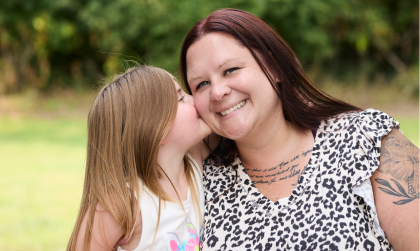
Take the Risk Assessment
The sooner you know you have prediabetes, the sooner you can take action to reverse it and possibly prevent type 2 diabetes.
Hear from Real Nebraskans

4 in 10
American Adults
(ages 18+) are prediabetic.

8 in 10 people
with prediabetes
are unaware they have it.

3 in 10 people
with untreated prediabetes
will develop diabetes within five years.
What is prediabetes?
Prediabetes involves higher-than-average blood sugar levels putting you at increased risk for developing serious health problems such as type 2 diabetes, stroke and heart disease. High blood pressure, excess weight or an immediate family member with Type 2 Diabetes increases the likelihood you’ll become prediabetic. But YOU have the power to prevent or delay prediabetes.
Spot the risk factors!
- High cholesterol
- High Blood Pressure
- An immediate family member with type 2 diabetes
- Overweight
- List Item
- Age 45+
- Physically active fewer than 3 times weekly
- Given birth to a baby weighing 9+ pounds
- Had gestational diabetes while pregnant
Race and ethnicity also affect your risk. African Americans, Hispanic/Latino Americans, American Indians, Pacific Islanders and some Asian Americans are at higher risk for type 2 diabetes.
Find out if you are at risk by taking a diabetes risk assessment. If you are at risk, consider taking a lifestyle change program. These programs are one of the most effective ways to prevent getting type 2 diabetes by helping you lose weight, become more active and prevent or delay type 2 diabetes.
Preventable. Treatable. Reversible.
